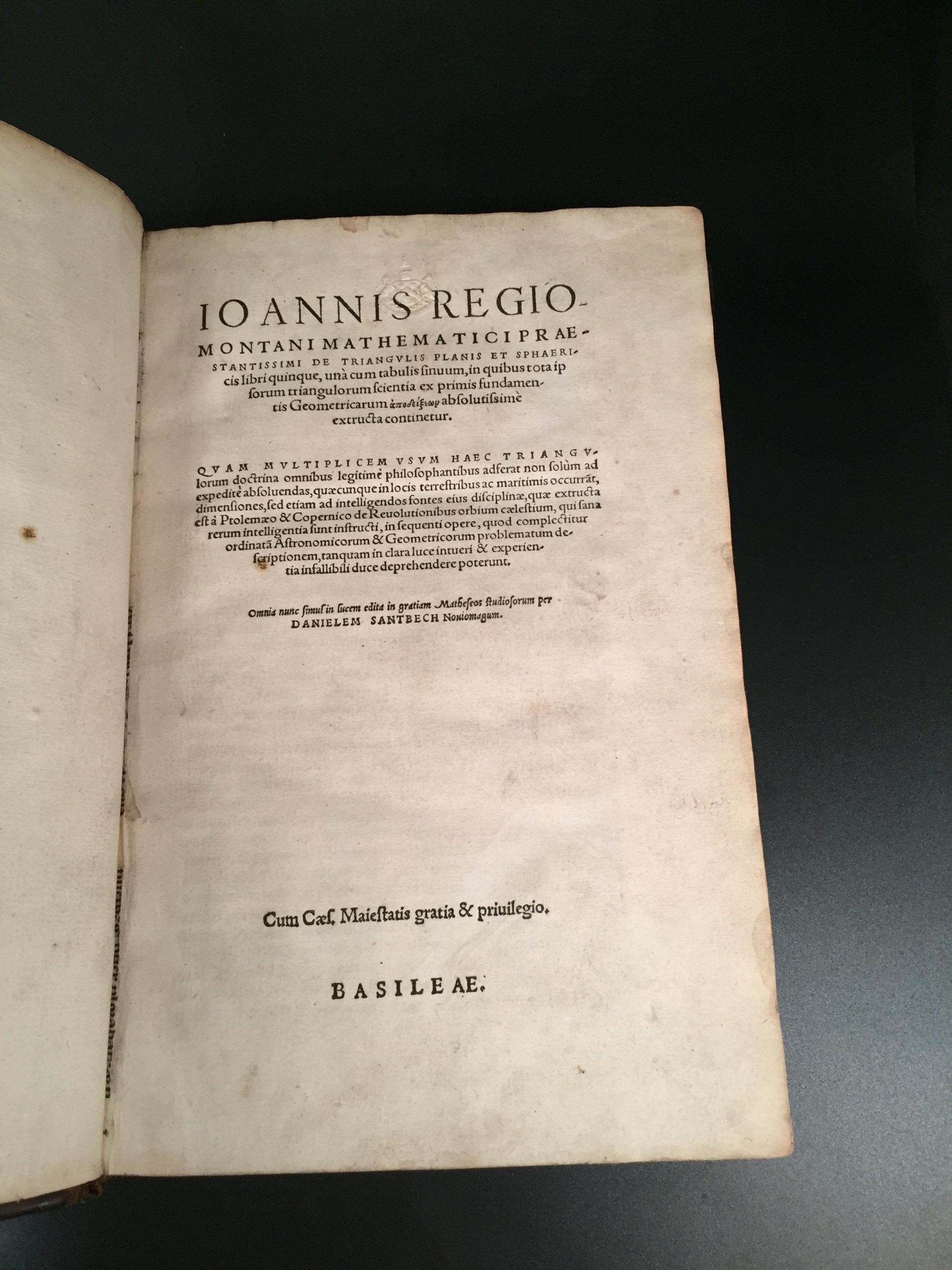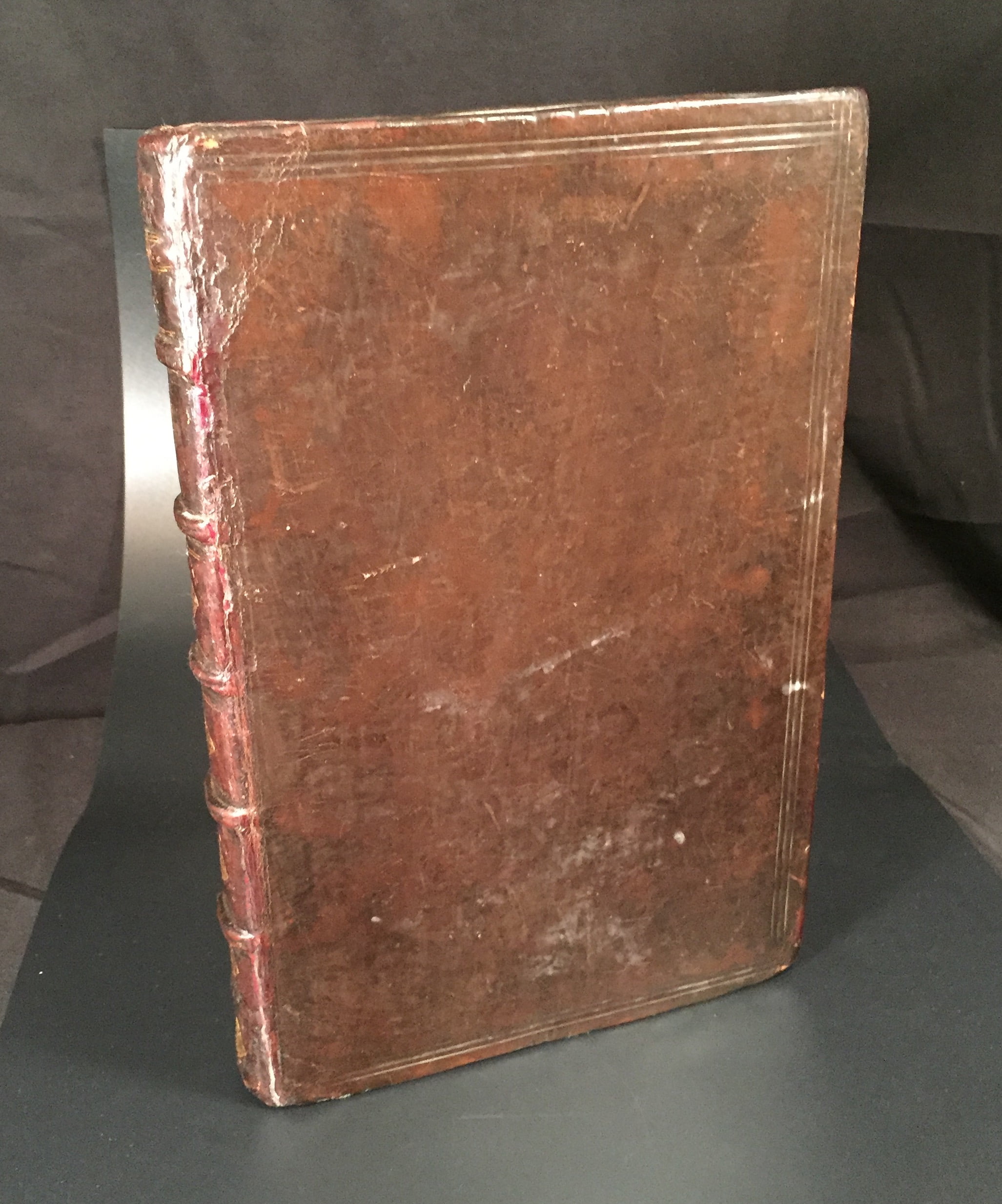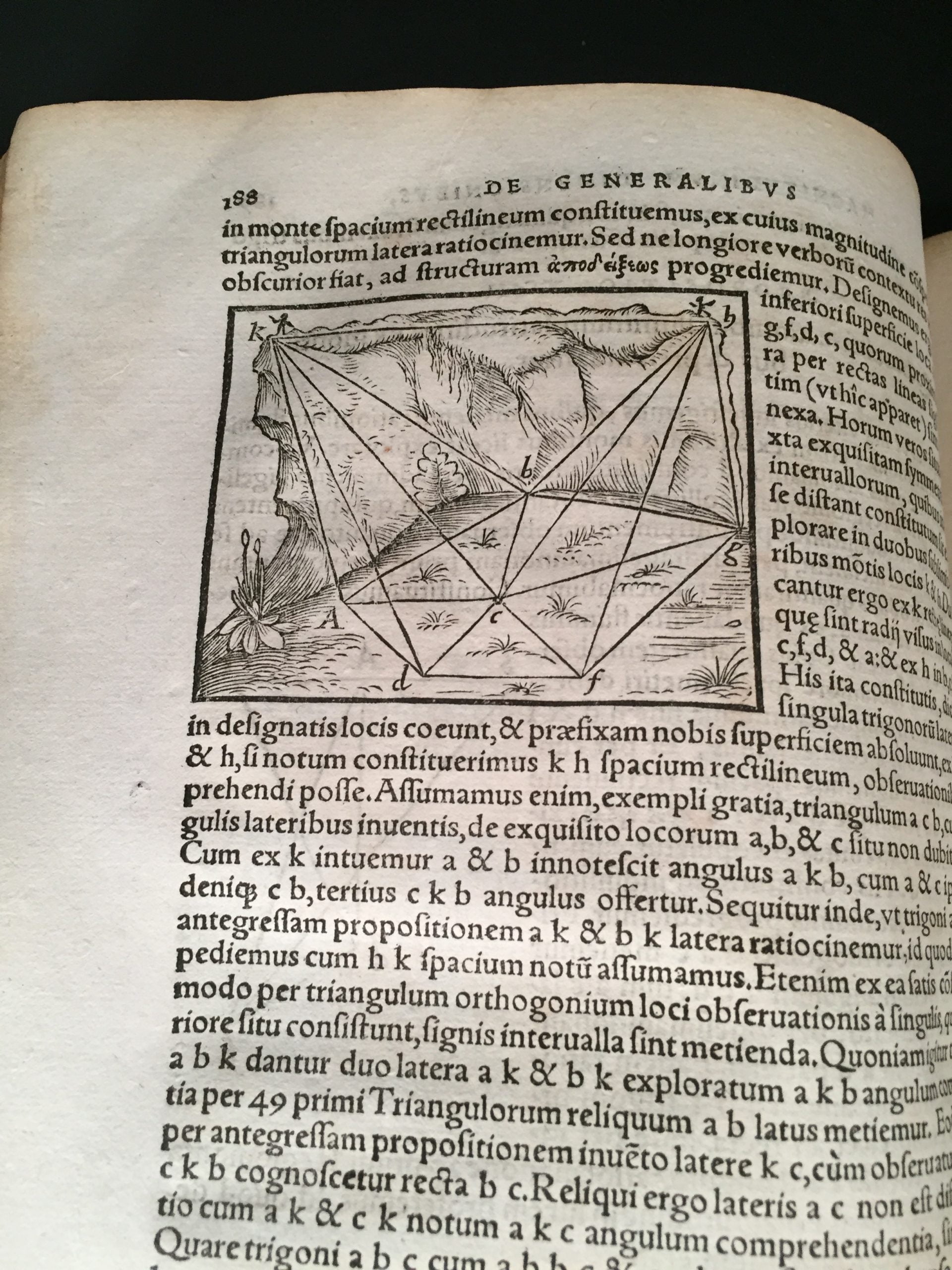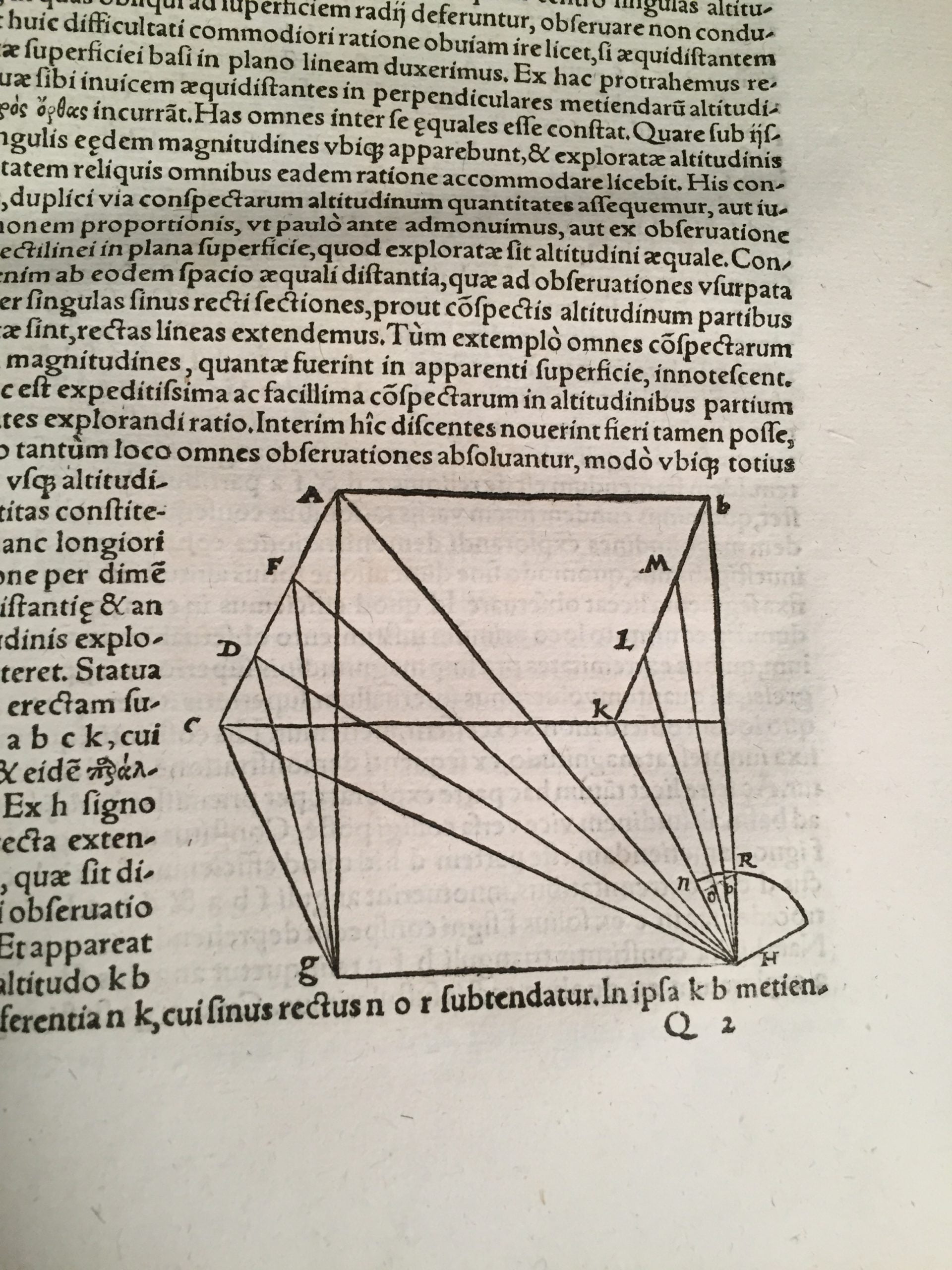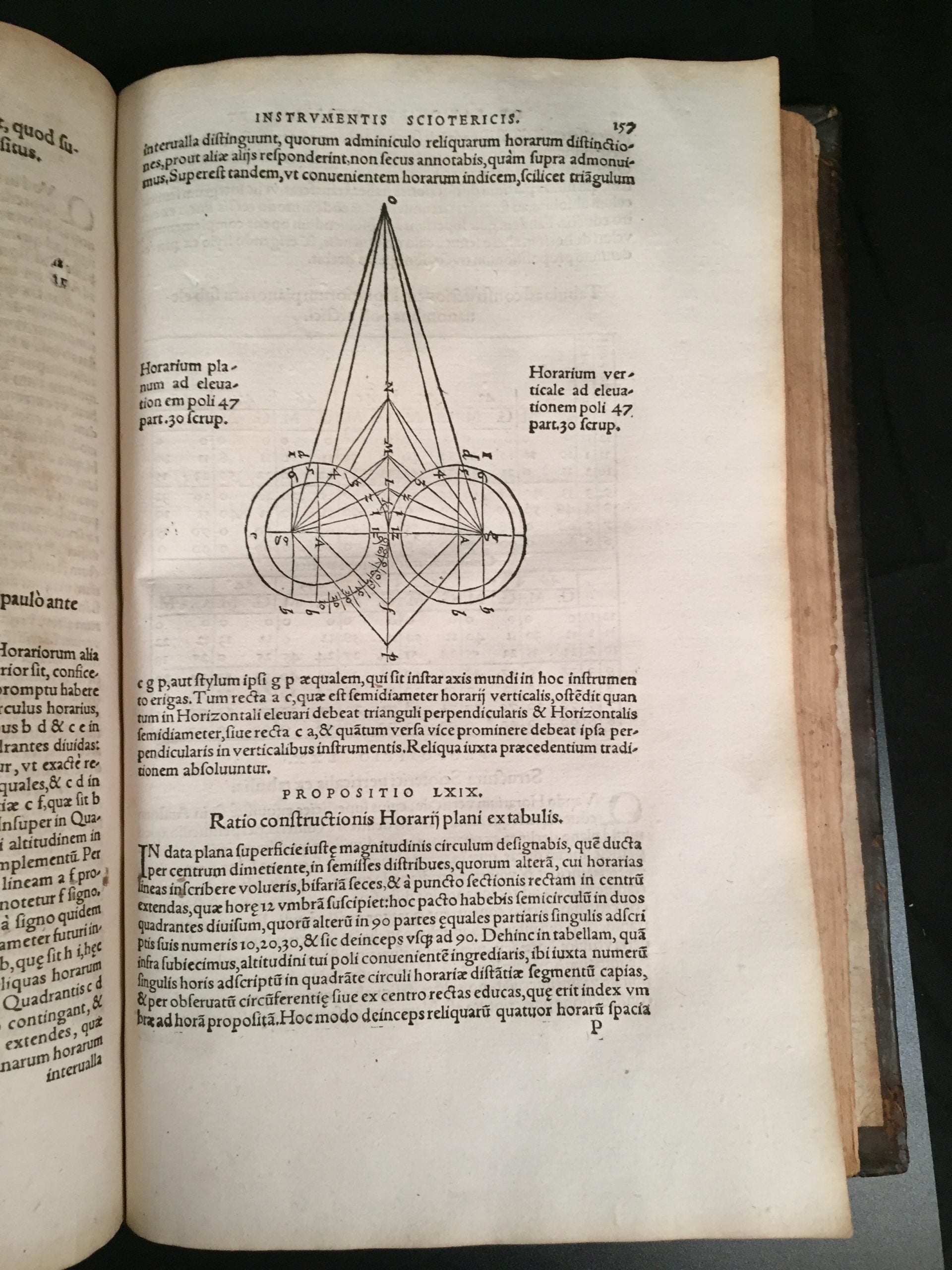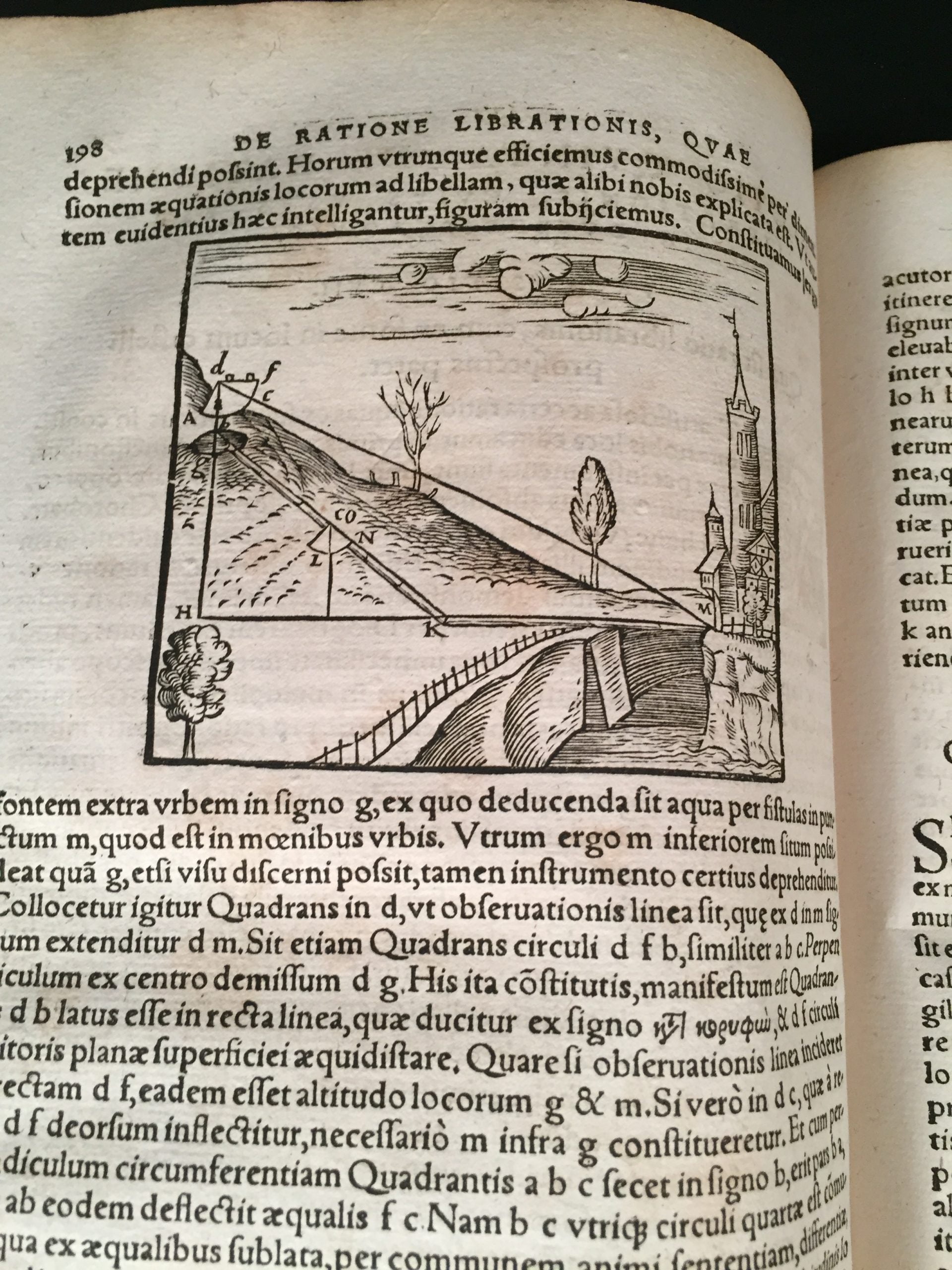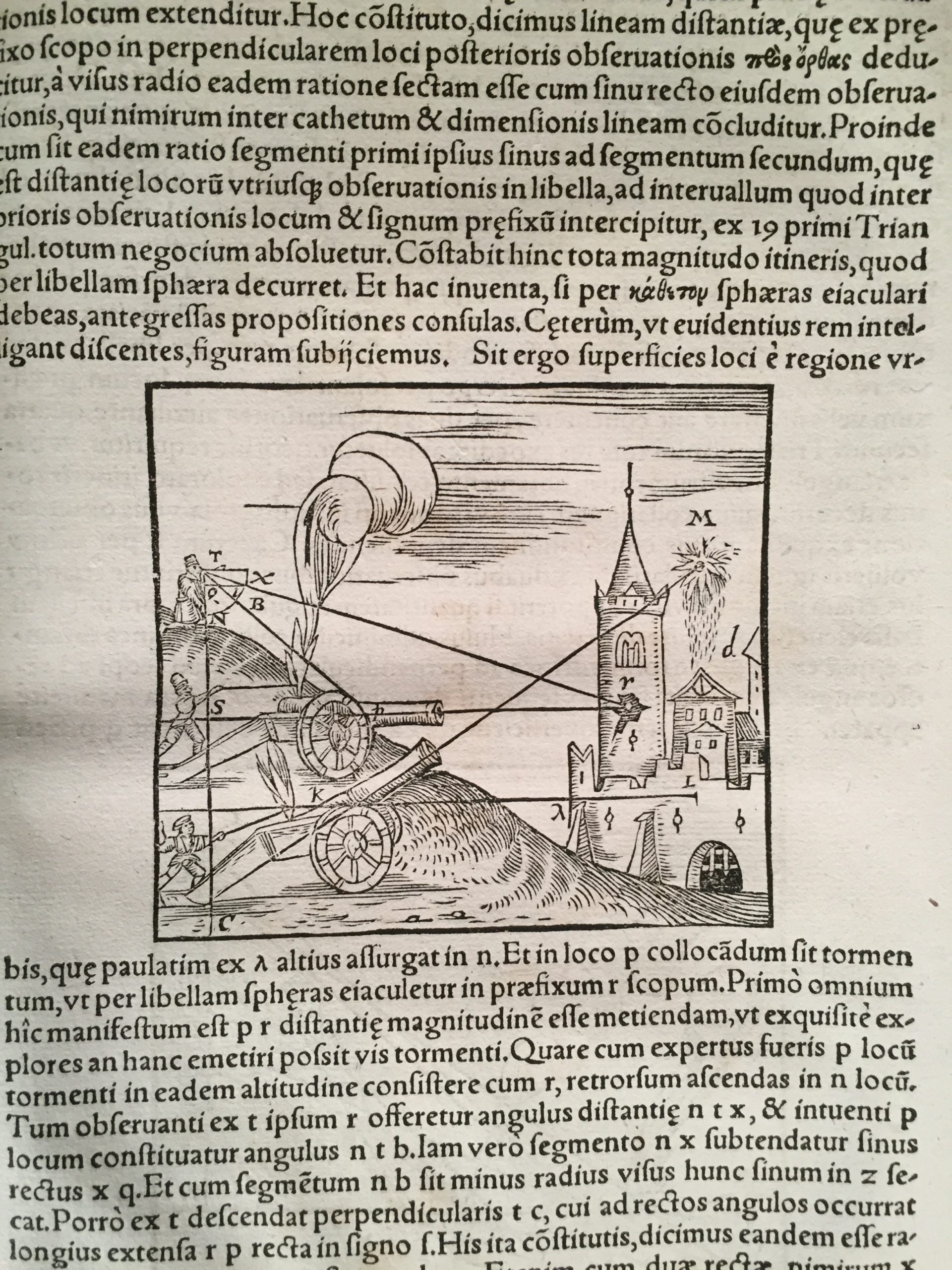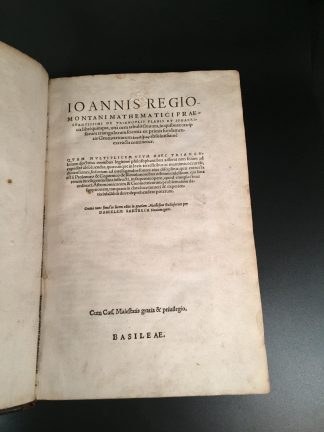REGIOMONTANUS, Iohannes.
MACCLESFIELD COPY
REGIOMONTANUS, Iohannes De triangulis planis et sphaericis libri quinque.
Basle, per Henricum Petri, et Petrum Pernam, 1561£12,500.00
FIRST EDITION thus. Folio. 2 vols in one. pp. [viii] , 146 , [xxxviii]; [xx], 294 , [ii]. [ast]4, a-o6, p8; [ast]6, A4, B-2A6, 2B4, 2C6. Roman letter, some Italic and Greek. Fine historaited woodcut initials, innumerable woodcut diagrams and illustrations including a beautiful woodcut suite of the zodiac, armorial bookplate of the Earls of Macclesfield on pastedown, early mss shelf mark above, their blind-stamp at head of first two leaves. Light age yellowing, browning on one or two quires, with some minor spotting, the odd marginal thumb mark or stain. A fine copy, crisp and clean with good margins, in handsome contemporary English calf, covers bordered with a triple blind rule, spine with raised bands, gilt ruled in six compartments, gilt fleurons to centres, stubbs from an early English vellum manuscript in double column, extremities expertly restored.
A very handsome copy of the rare enlarged third edition; De triangulis was Regiomontanus’s most important scientific contribution. Completed in 1464, it remained in manuscript for nearly seventy years before being published in 1533 in Nuremberg by Johann Petri. It contains the earliest statement of the cosine law for spherical triangles, stating the proportionality of the sides of a plane triangle to the sines of the opposite angle. This fundamental proposition of spherical trigonometry appears as theorem 2 in book V of the treatise. In the second part, Regiomontanus proves the errors of Nicolaus de Cusa’s theory of squaring the circle, which had a profound effect on the history of navigation.
“The first systematic treatise on plane and spheric trigonometry to be published in Europe. Although it drew heavily on Arabic sources, those earlier treatises had been either lost or forgotten by 1533 when Regiomontanuss work was first printed. Among the notable contents of this work are the sine law and perhaps the first European application of algebra to trigonometry. Indeed with De triangulis trigonometry was established as an independent discipline. Regiomontanus’ original purpose, however, had been to furnish astronomers with a mathematical technique essential for their studies, and in this De triangulis had a success perhaps greater than its author could have dreamed of. For in 1539 Georg Joachim Rheticus presented a copy of the work’s 1533 edition as a gift to Copernicus. The great astronomer had already written the trigonometrically-based portion of his De Revolutionibus without knowledge of his predecessor’s treatise. After reading the new book, Copernicus modified the presentation of several of his own indispensable theorems by inserting two leaves in the manuscript of the De Revolutionibus. Hence, Rheticus’ remark that Regiomontanus began the reconstruction of astronomy that Copernicus completed takes on a fuller meaning” Rose, ‘The Italian Renaissance of Mathematics,’ ‘This edition is enlarged with by two early complementary treatises the “Tabula sinuum ad 6000000 partes per I. de Regiomonte computata” and the “Tractatus super propositiones Ptolemaei de sinubus et chordis” by Peurbach.
The second work in this volume is the first appearance of an expanded treatise by Santbech on astronomy. It deals with instruments for astronomical observation, and details various methods of measurement using Regiomontanus’ work on triangles, described in the first work. It is interesting for its post Copernican perspective, who is cited in the work. Thomas Digges also cites the work in his ‘An Arithmeticall Militarie Treatise’; see Military Books, p. 23.
A very good copy from the extraordinary scientific library of the Earls of Macclesfield.
BM STC Adams R-281. Houzeau & Lancaster 2500. Tomash & Williams R54, R61, P64, S13; VD16 M6571; Santbech: Zinner 2273In stock


